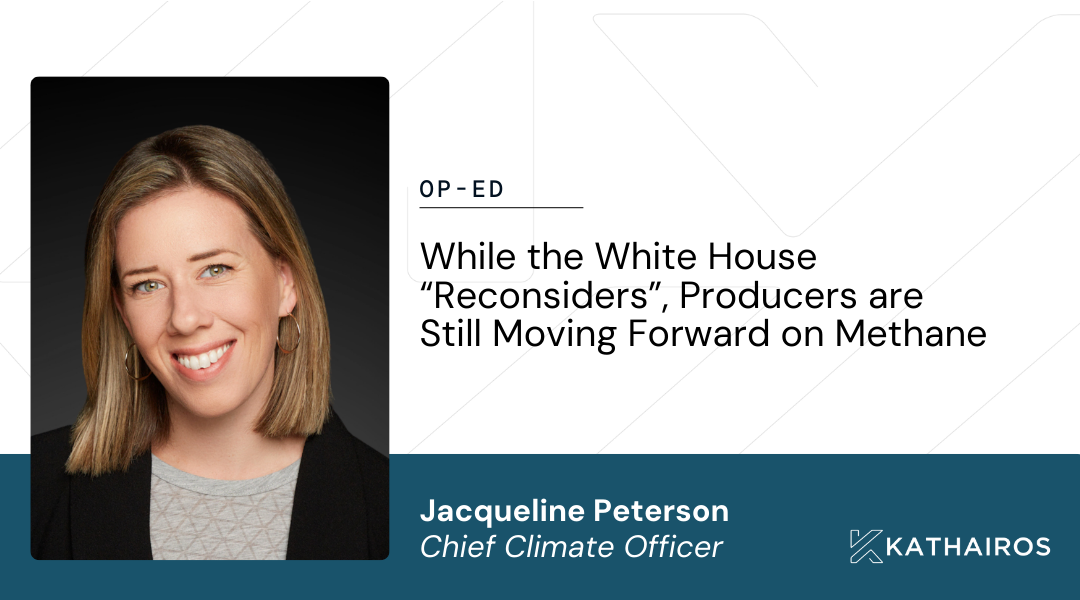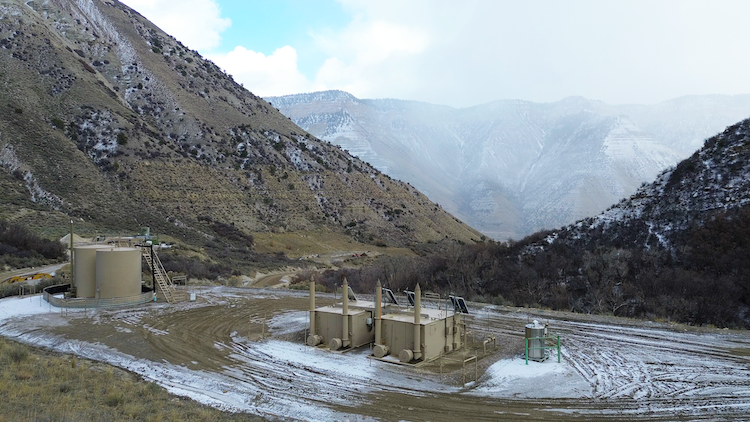
Kathairos has emerged as the leading North American solution for methane elimination from pneumatics, with more than 1,000 systems in operation across North America and over 40 major oil and gas producer partners.
In this post
Numbers don’t lie: the oil and gas industry has significantly reduced methane emissions… the only caveat? These numbers aren’t the entire picture.
Current gaps in monitoring mean that available data concerning methane emissions are incomplete and unreliable. Without an accurate gauge of the scope of the problem, it is difficult to truly assess the progress and meaningful impact achieved in the realm of emissions reduction.
So, what is the next step? Clearly, there needs to be a comprehensive monitoring system developed with three key components.
A Welcomed Win
Canada’s record on fulfilling its climate pledges is not the strongest.
In fact, Canada’s Commissioner of the Environment and Sustainable Development, Jerry DeMarco, has even gone so far as to criticize national policies as incoherent and furthered that they have not done their fair share to meet the Paris Climate Agreement of holding warming to 1.5C, compared to pre-industry levels.
Discouraging? Yes. But the one saving grace: methane. In all reports, Canada is recorded as doing particularly well in reducing methane emissions.
Methane accounts for 25% of the warming worldwide and 13% of Canadian emissions annually. It is an extremely potent greenhouse gas, having 84 times the impact on the atmosphere compared to CO2 on a 20-year timescale. The oil and gas sectors constitute almost 40% of Canada’s methane emissions, with a large part coming from intentional venting and unintentional leaks.
Climate experts often describe methane as the “low-hanging fruit” of climate action, since reducing them is a quick and cost-effective way to reduce warming. In all respects: Canada appears to be picking that low-hanging fruit.
In 2021, the federal government announced a target of reducing oil and gas methane emissions by 75%, relative to 2012 levels, by 2030. At the same time, it joined over 20 countries in the Global Methane Pledge, to help reduce global methane emissions by at least 30% from 2020 levels by 2030. The Canadian government later announced a proposed regulatory framework at COP27 outlining how it plans to achieve a 75% reduction in methane emissions.
Recent reports indicate that Canada is certainly making strides: Environment and Climate Change Canada’s 2021 review of Canada’s methane regulations claims that the country is on track to reduce oil and gas methane emissions by 40-45% relative to 2012 levels by 2025, without considering historical underestimations.
Despite these concerns, the Canada West Foundation celebrates Western Canada’s “substantial” and rapid reduction of methane emissions, celebrating it as a “real accomplishment” and a massive win in the fight against climate change.
Things certainly look on the up and up- until a European Space Agency satellite happened to spot a massive methane plume over Lloydminster, which did not coincide with any reported venting events and of which Canadian regulators were unaware.
This raises the question: what else is missing? Multiple conducted studies seem to suggest that the answer is… they’re probably missing a significant amount. This calls into question credibility when it comes to methane data reporting.
Missing in Action
It is well understood that underreporting and underestimating methane emissions are commonplace all around the world.
According to the International Energy Agency’s 2022 report, global methane emissions from the energy sector are approximately 70% higher than officially reported data.
Canada is no exception, with many regional studies demonstrating that methane emissions significantly exceed reported levels.
In Ontario, researchers found fugitive (or unintentional) methane emissions are more than 90% higher than reported levels. With even small measurement differences having significant consequences for climate targets and impact, this much deviation is particularly problematic.
A study of oil and gas infrastructure in Alberta found that measured emissions were up to 15 times higher than what was reported, and that most emissions at the time were from unreported sources.
Further studies of multiple sites in Alberta found that upstream industry methane emissions are underestimated by a factor of 1.5, and that methane emissions from extraction and processing are nearly twice as high as reported levels.
Researchers in British Columbia studying methane plume using surveys found that methane emissions exceeded reported estimates by 78,000 tonnes. The Methane Emissions Research Collaborative conducted further research using aircraft-mounted laser technology and confirmed the findings echoed by similar studies that oil and gas sources emit as much as twice the methane shown by published estimates.
“There’s uncontrolled methane everywhere,” said former senior regulator for the Texas Commission on Environmental Quality, Tim Doty. “I don’t think- and my experience tells me- that regulatory authorities have any idea of how much methane is going into the atmosphere.”
The takeaway isn’t that Canada’s supposed progress on methane emissions is an illusion: it’s that we shouldn’t be all that confident in currently available evidence, and that the natural next step is to improve the quality of evidence we have.
Monitoring Taken to the Next Level
Canada plans to establish a Global Centre for Excellence on methane detection and elimination, which has the potential to significantly improve measurement. The federal government also promises to develop a “comprehensive, nationally consistent emission monitoring and reporting system.”
Monitoring will be key since actual emissions will be what matters most. The reality? Even if “true, accurate and complete” reporting is a regulatory requirement, self-reported data will always have room for error with regards to completely and consistently reflecting actual emissions.
A truly comprehensive monitoring system shouldn’t rely sole on a single technology, and it shouldn’t also rely on intermittent (or even “frequent”) inspections or reports, due to the extreme distribution of methane emissions.
Developing a comprehensive detection and monitoring system will thereby involve:
- Expansive and independent use of continuous- not intermittent- emissions monitoring systems
- Arrays of methane detection, monitoring and identification technologies, including but not limited to mobile ground, drone and satellite technologies
- International agencies leveraging the capacities of the global satellite network
Improved technologies, methods and regulations are on the horizon. Until then, we don’t need to stop celebrating: we just need to be aware that there’s much more work to be done in the realm of methane reduction.
Explore more posts from Kathairos
.jpg)
Decarb Digest, Issue 01: Discover Why Energy Leaders Aren’t Waiting on Washington

Op-Ed: While the White House “reconsiders”, producers are still moving forward on methane

